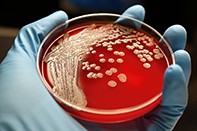Peer Reviewed
Infectious diseases clinic
Preventive strategies for recurrent staphylococcal skin infection
Abstract
Recurrent staphylococcal skin infection caused by methicillin-resistant and methicillin-susceptible strains of Staphylococcus aureus is an increasing problem in certain communities. Effective management requires attention to active lesions, general skin condition and integrity, and personal hygiene. In selected patients, there may be a role for intermittent antiseptic body washes to reduce staphylococcal skin load, and, in limited circumstances, formal staphylococcal decolonisation (eradication).
Key Points
Recurrent staphylococcal infection often commences with the introduction of a new strain of methicillin-susceptible Staphylococcus aureus (MSSA) or, more recently, methicillin-resistant S. aureus (MRSA) into a household or family by an affected individual. Typically, only some household members then develop infection despite likely exposure and even colonisation among other members. This may relate to innate or immune factors, which are currently poorly described, or to a protective effect from carriage of other resident microbial flora.
Purchase the PDF version of this article
Already a subscriber? Login here.

